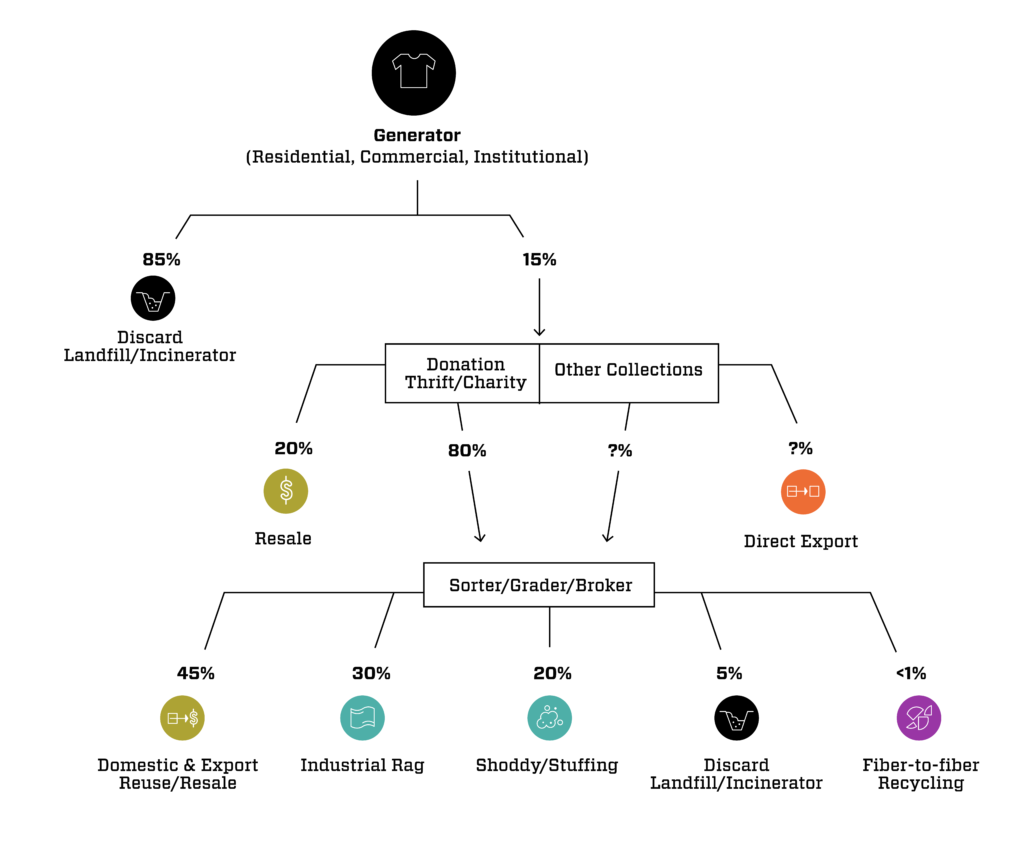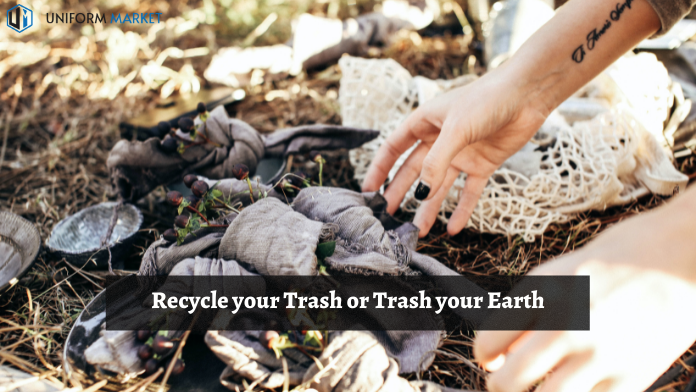NIST Report Identifies Strategies for Greater Recycling of Textiles
In the United States, only approximately 15% of worn clothing and other textiles are reused or recycled. The remaining 85% is destined for a landfill or incineration. These waste scarce resources cause climate change and pollute waterways.
In a new report from the National Institute of Standards and Technology (NIST), Facilitating a Circular Economy for Textiles, scientists recommend strategies to address this problem. The circular economy referenced in the title is one in which materials remain in the economy longer through repeated reuse, repair, and recycling, and are finally discarded only as a last resort.
The report was based on a three-day workshop held at NIST in September 2021, which brought together manufacturers, industry groups, recyclers, waste managers, researchers, policymakers, and several large fashion brands who all want to see the textiles industry become more circular.
“Textiles are one of the fastest-growing categories in the waste stream,” said Kelsea Schumacher, an environmental engineer working with NIST who co-authored the report. “But there are a lot of opportunities to reduce waste in this sector that would bring big economic and environmental benefits.”
Textiles are defined as clothing, shoes, bedding, towels, upholstery materials, and carpeting in the report. According to the Environmental Protection Agency (EPA), the most common type of textile in municipal garbage is abandoned apparel. In 2018, the most recent year for which statistics are available, each person in the United States discarded around 47 kilos (103 pounds) of textiles.
Many people donate their used clothes. Clothing and other fabrics that are too old or worn, however, can still be used in other items. Industrial rag makers, for example, can cut and resell them. The fibers can also be separated and repurposed into new fabrics, used as filling for upholstered furniture and automobile seats, or as a kind of home insulation.
The report’s authors gathered information from a variety of sources to build a flow diagram depicting what happens to textiles in the United States after they are given or disposed of.

Credits: NIST
Consumers lack information about how to dispose of their worn textiles, according to the survey, which is one barrier to more reuse and recycling. Many individuals, for example, are unaware that they can be recycled. Textile recycling drop-off centers can easily be identified with a basic internet search in cities and municipalities.
However, consumer knowledge is limited. Other improvements that firms and governments can make to boost textile reuse and recycling are suggested in the research. Better sorting and grading technologies, advanced labeling and digital product identification, advanced recycling procedures for specific synthetics that aren’t currently recyclable, standardized language and classifications, and improved data collecting are among these.
Also read: Possibilities of Human Waste in Textile Manufacturing













